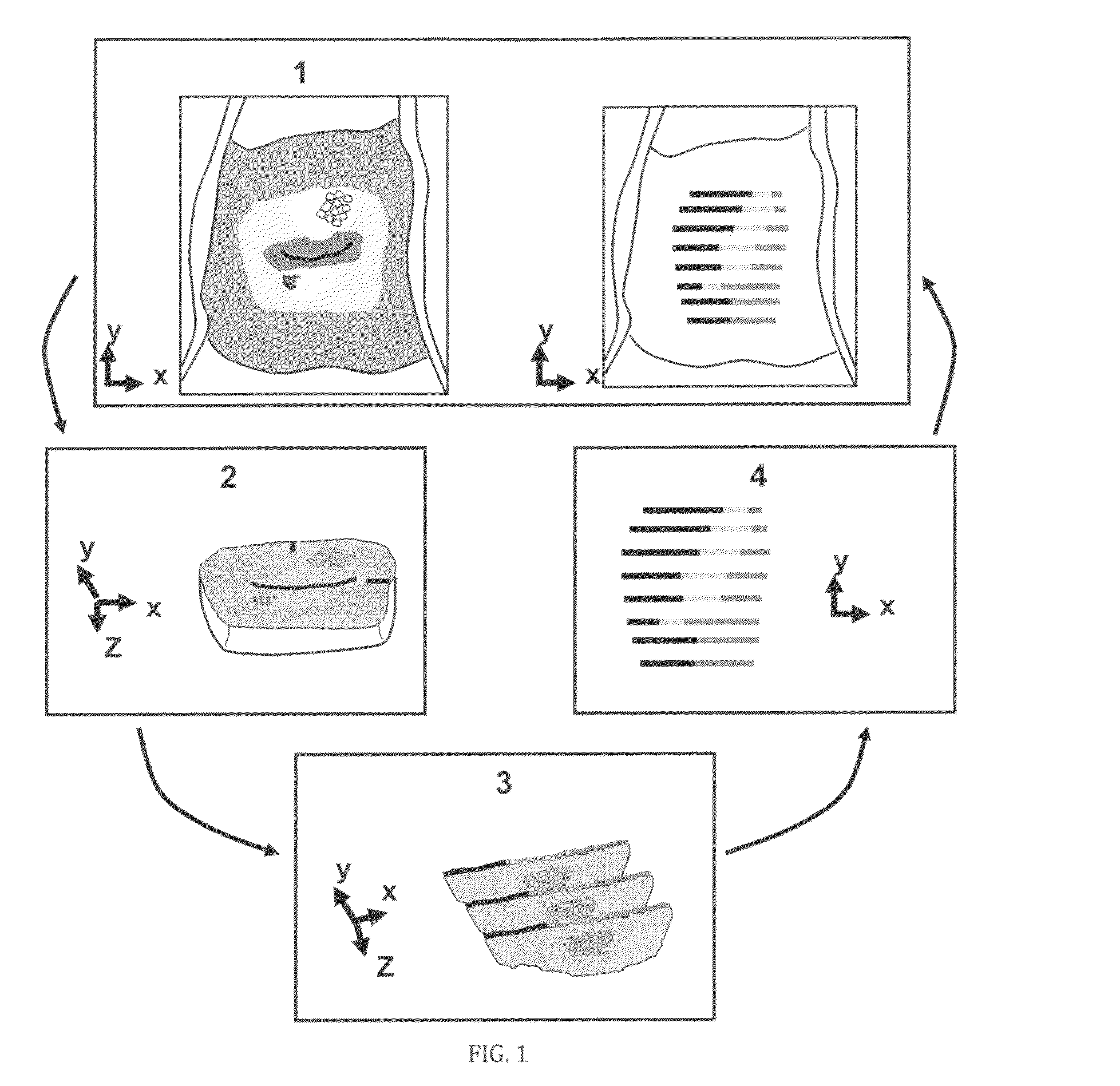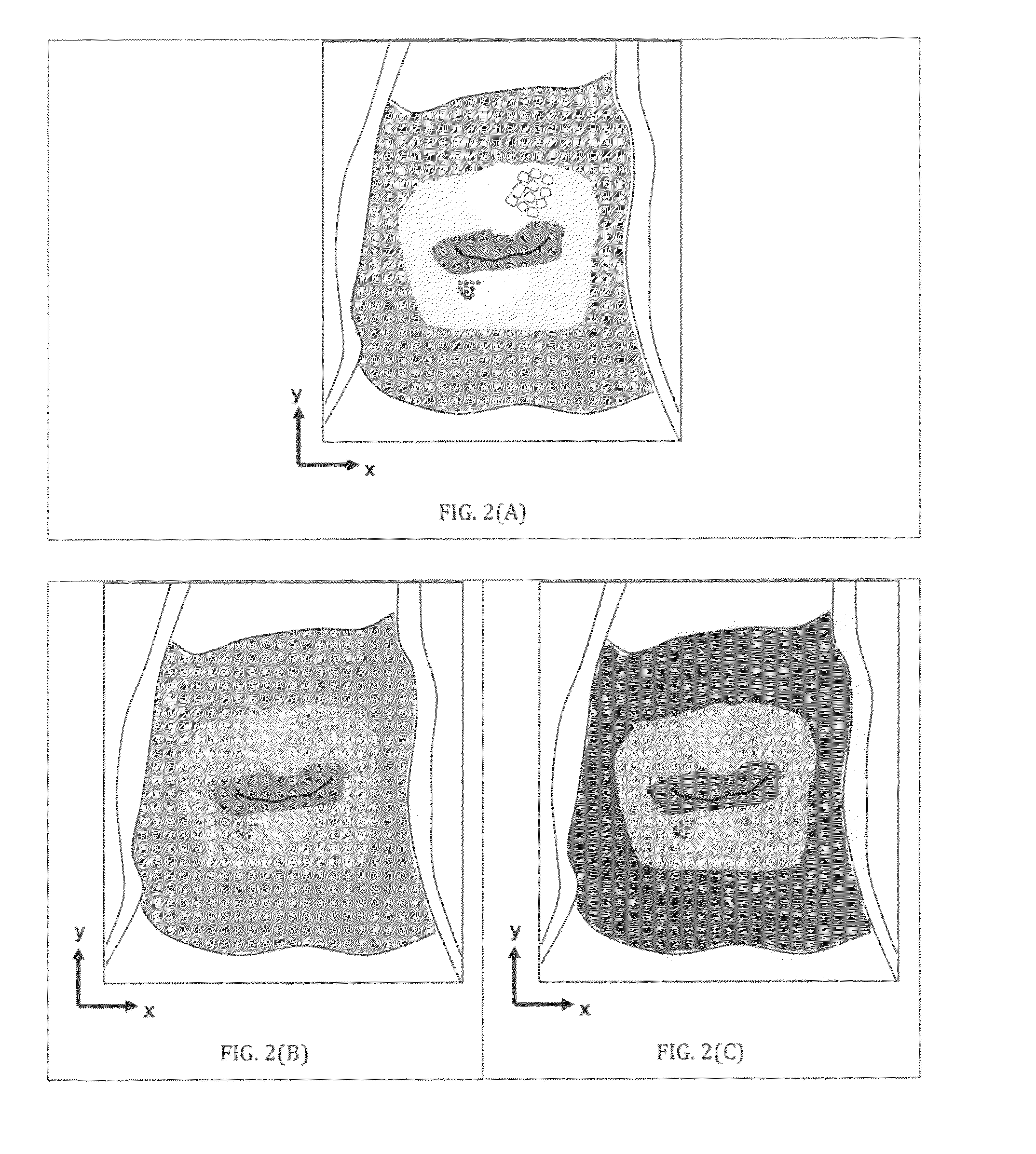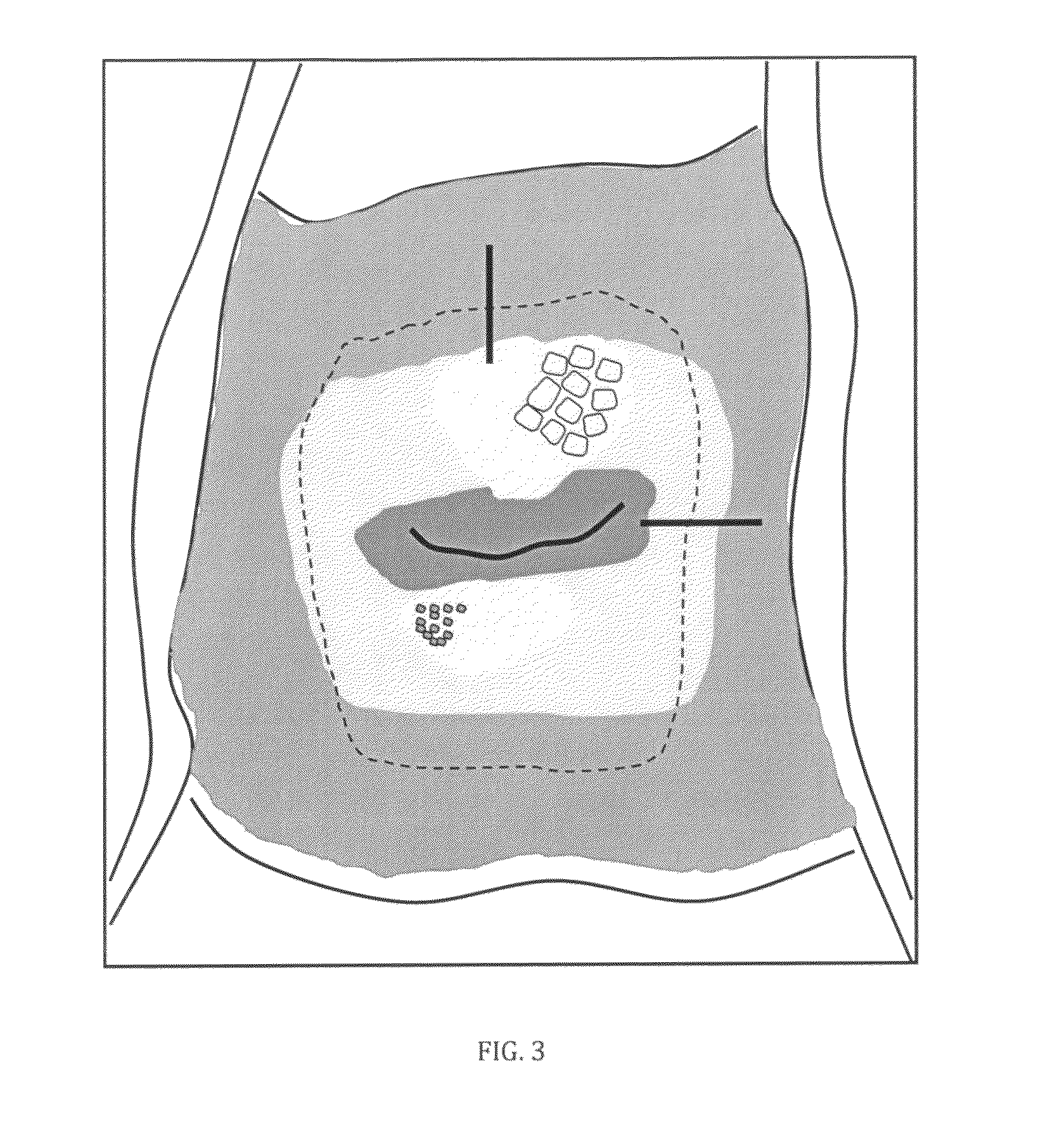Process for preserving three dimensional orientation to allow registering histopathological diagnoses of tissue to images of that tissue
a three-dimensional orientation and image processing technology, applied in the field of histopathology analysis and reconstruction, can solve the problems of increased infection risk, bleeding, physical and emotional discomfort, cost, etc., and achieve the effect of reducing the risk of infection, reducing the risk of bleeding, and reducing the accuracy of the diagnosis
- Summary
- Abstract
- Description
- Claims
- Application Information
AI Technical Summary
Benefits of technology
Problems solved by technology
Method used
Image
Examples
Embodiment Construction
Overview
[0111]The presently preferred embodiments of the invention described herein disclose a systematic framework to maintain the spatial orientation at each level of tissue processing of a three-dimensional tissue specimen removed from an area of investigation, perform detailed histopathology analysis, and precisely map the location of the histopathology back to a digital image of the area of investigation acquired prior to removing the tissue specimen.
[0112]By utilizing tissue image acquisition, processing, and registration techniques in combination with mechanical and image processing tools and novel tissue processing procedures, the present invention accurately determines the location of the histopathology analysis (the ‘z-axis’) of the tissue specimen as it relates to the overlying tissue structure (the ‘x-y-axes’). The procedural steps of the presently preferred embodiments, as schematically illustrated in FIG. 1, and which will be described in detail in the following sectio...
PUM
| Property | Measurement | Unit |
|---|---|---|
| working distance | aaaaa | aaaaa |
| distance | aaaaa | aaaaa |
| distance | aaaaa | aaaaa |
Abstract
Description
Claims
Application Information
 Login to View More
Login to View More - R&D
- Intellectual Property
- Life Sciences
- Materials
- Tech Scout
- Unparalleled Data Quality
- Higher Quality Content
- 60% Fewer Hallucinations
Browse by: Latest US Patents, China's latest patents, Technical Efficacy Thesaurus, Application Domain, Technology Topic, Popular Technical Reports.
© 2025 PatSnap. All rights reserved.Legal|Privacy policy|Modern Slavery Act Transparency Statement|Sitemap|About US| Contact US: help@patsnap.com



